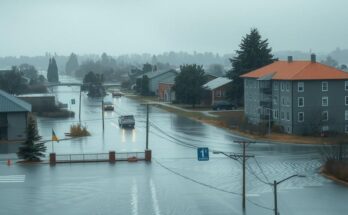A recent report advocates for strengthening Japan’s disaster response systems, emphasizing improvements needed in evacuation centers after analyzing the Noto earthquake. Key recommendations include providing sufficient shelter facilities, such as cardboard beds and cooking options, particularly for aging communities.
The recent report from a governmental task force emphasizes the urgent need for Japan to enhance its disaster response frameworks, particularly concerning shelter conditions for victims following catastrophic events. This examination, spearheaded by Nobuo Fukuwa, a professor emeritus at Nagoya University, utilized data from the January 1 Noto earthquake to propose actionable measures aimed at reducing disaster-related fatalities, especially amongst elderly populations. Key recommendations include the provision of cardboard beds and improvements in cooking and sanitation facilities in evacuation centers, fostering a more supportive environment during crises.
Japan, a nation often impacted by natural disasters, has recognized the critical importance of effective disaster response systems. The Noto earthquake served as a catalyst for this analysis, revealing the vulnerabilities within existing evacuation strategies, particularly for aging communities. As disaster occurrences become increasingly frequent, it is imperative for Japan to reassess and fortify its readiness to effectively protect its citizens during emergencies.
In summary, the findings of the task force highlight significant shortcomings in Japan’s current disaster shelter systems, advocating for enhancements that will better serve vulnerable populations. The emphasis on immediate access to basic amenities, such as cooking and sanitation facilities, is crucial for ensuring the safety and comfort of those affected during disaster situations. As Japan prepares for the inevitability of future disasters, implementing these recommendations may save lives and prevent tragedies.
Original Source: www.japantimes.co.jp




